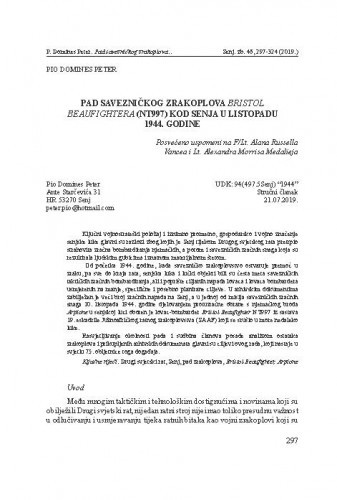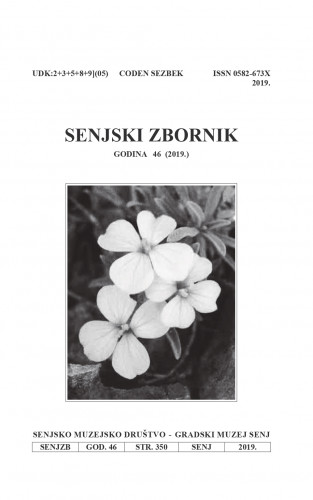Ključni vojnostrateški položaj i iznimno prometno, gospodarsko i vojno značenje senjske luke glavni su razlozi zbog kojih je Senj tijekom Drugog svjetskog rata pretrpio strahovita zračna bombardiranja njemačkih, a potom i savezničkih zračnih snaga koja su rezultirala ljudskim gubicima i znatnom materijalnom štetom. Od početka 1944. godine, kada savezničko zrakoplovstvo ostvaruje premoć u zraku, pa sve do kraja rata, senjska luka i lučki objekti bili su česta meta savezničkih taktičkih zračnih bombardiranja, ali i poprište ciljanih napada lovaca i lovaca bombardera usmjerenih na manje, specifične i posebno planirane ciljeve. U arhivskim dokumentima zabilježen je veći broj zračnih napada na Senj, a u jednoj od misija savezničkih zračnih snaga 10. listopada 1944. godine djelovanjem protuzračne obrane s njemačkog broda Arpione u senjskoj luci oboren je lovac-bombarder Bristol Beaufighter NT997 iz sastava 19. eskadrile Južnoafričkog ratnog zrakoplovstva (SAAF) koji se srušio u more nedaleko luke. Rasvjetljivanje okolnosti pada i sudbina članova posade analizom ostataka zrakoplova i prikupljenih arhivskih dokumenata glavni su ciljevi ovog rada, koji nastaje u svjetlu 75. obljetnice toga događaja.; The key military strategic position and exceptional transport, economic and military significance of Senj harbour were the reasons why during the Second World War Senj suffered air bombardments by the Germans and subsequently by Allied air forces which resulted in humannlosses and significant material damage. From the beginning of 1944, when Allied air forces gained supremacy in the air, all the way until the end of the war, Senj harbour and the harbour facilities were often targets of Allied tactical aerial bombardments, as well as the scenes of targeted attacks of fighters and fighter-bombers directed at small, specific and specially planned targets. In archive documents a large number of aerial attacks on Senj are noted, and during one mission by Allied air forces, on 10th October 1994, during antiaircraft defence with the German ship Arpione in Senj harbour a Bristol Beaufighter NT997 fighter-bomber from the 19th squadron of the South African Air Force (SAAF) was hit and crashed into the sea not far from the harbour. Illuminating the circumstances of the crash and fate of the members of the crew by analysing the remains of the plane and collected archive documents are the main aim of this paper which came to be upon the 75th anniversary of this event.
Sažetak

 Senjski zbornik : prilozi za geografiju, etnologiju, gospodarstvo, povijest i kulturu : 46(2019).
Senjski zbornik : prilozi za geografiju, etnologiju, gospodarstvo, povijest i kulturu : 46(2019).